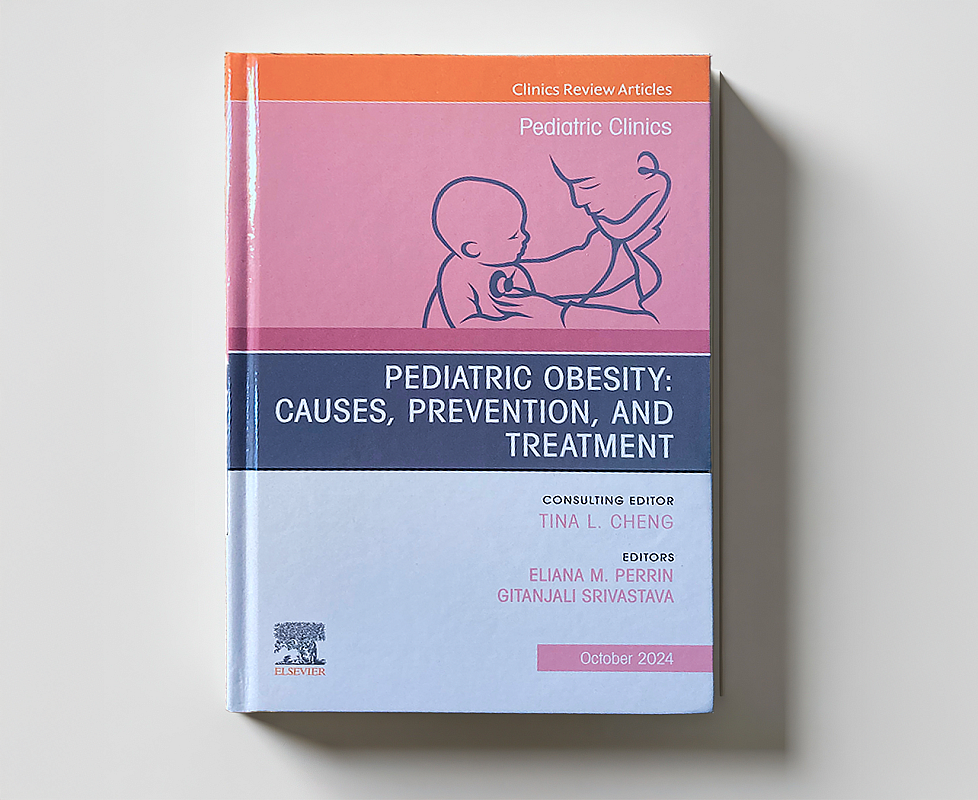Childhood obesity remains a pressing public health challenge, and recent research underscores the role of the built environment in shaping health outcomes. In the recently published article The Built Environment and Childhood Obesity Alison Mears, Executive Director of Parsons Healthy Materials Lab, joined authors Maida P. Galvez, MD, MPH, Katharine McCarthy, PhD, and Chethan Sarabu, MD, to explore the intersection between the built environment and obesogens- a class of chemicals that disrupt metabolism and as a result promote weight gain.
“Environmental advocates, consumers, architects, designers, researchers, clinicians, and more are demanding increased transparency from manufacturers to more readily identify potential environmental hazards…Often manufacturers don’t know all the additives in their products, the potential harm that these chemicals can cause, nor the impact of the chemicals on the performance of their products…” pg836
"In many cases chemicals can be simply eliminated or replaced with a safer alternative.”

"The Built Environment and Childhood Obesity", published October 2024 in 'Pediatric Obesity: Causes, Prevention, and Treatment' edited by Eliana M. Perrin and Gitanjali Srivastava
Children’s Health in the Built Environment
The built environment refers to the physical structures and spaces where children live, learn, eat, sleep, and play. These include homes, schools, parks, playgrounds, transportation networks, and more. According to the article, features of the built environment can significantly influence children’s physical activity levels, diet, sleep, and stress—factors that collectively impact their risk for obesity.
Following are some of the issues addressed in the article and takeaways.
Neighborhood Disparities and Health Inequities: Neighborhood disparities in access to green spaces, healthy food options, and safe play areas contribute to unequal health outcomes. Low-income communities and communities of color often lack the resources needed to support active lifestyles. Public health interventions aimed at fostering healthy neighborhoods can bridge this gap and promote equity.
The Role of Physical Activity Resources: Parks, playgrounds, and sports fields do more than encourage physical fitness. They also support children’s emotional, social, and cognitive development. Unfortunately, disparities in the availability and quality of these resources are well-documented and far reaching. The article highlights the importance of outdoor play to reduce sedentary behaviors and lower obesity rates, especially in areas with improved access to green spaces.
Designing Walkable Communities: Neighborhood walkability is another critical factor. Features like dense, mixed-use neighborhoods with accessible destinations and safe walking routes encourage children to be more physically active. Adolescents, in particular, benefit from environments designed to facilitate walking and cycling. The promotion of public transportation also plays a role, as greater access to transit options has been associated with lower obesity rates among children.
Obesogens in Building Materials: Another pressing concern is the prevalence of obesogens—chemicals in building and consumer products that disrupt endocrine function and contribute to weight gain. These chemicals, such as PFAS and phthalates, often find their way into indoor environments through materials like upholstery, paints, and finishes. As the article states, “Exposure to these chemicals contributes to indoor air quality that is typically 2-5 times worse than outdoor air quality,” putting children at risk.
Climate Change and Health Impacts: Climate change compounds these challenges. Rising temperatures and extreme weather events disrupt outdoor activities, limit access to physical activity resources, and exacerbate indoor air quality issues. The article emphasizes that “localized areas of higher temperatures… disproportionately impact poor communities,” necessitating climate-resilient urban design solutions.
Pathways to Healthier Communities: To address childhood obesity, the article advocates for multifaceted strategies:
- Community Design: Create walkable neighborhoods with safe, accessible green spaces and active transportation options.
- Policy Advocacy: Implement environmental regulations to reduce exposure to air and noise pollution and restrict the use of obesogens.
- Family and Educational Interventions: Encourage family-based physical activity and promote healthy behaviors through school and community programs.
Moving Forward
The authors conclude with a call to action: public health efforts must integrate ecological systems theory to address both micro and macro-level factors influencing childhood obesity. From advocating for healthy building materials to promoting equitable access to community resources, these interventions are vital for creating environments that support children’s health and well-being.
We also note that the Built Environment has a profound impact on Women’s Health.
While childhood obesity is a critical public health issue, it is essential to recognize the broader health implications of environmental exposures, particularly for women. Pregnant women, for example, are uniquely vulnerable to harmful chemicals in the built environment. Exposure to endocrine-disrupting chemicals like obesogens can influence fetal development, increasing the likelihood of metabolic disorders and obesity later in life. Research by leading experts such as Dr. Philip Landrigan has highlighted the profound impact of prenatal environmental exposures on long-term health outcomes. Ensuring that indoor spaces are free from harmful chemicals not only protects children but also supports maternal health, reinforcing the need for healthier materials in homes, schools, and workplaces.
For the full article: https://www.sciencedirect.com/science/article/abs/pii/S0031395524000865
For resources on healthier building materials and designing for healthier communities: https://healthymaterialslab.org.
Read More
Join Our Academic Network
Get Access to our carefully researched and curated academic resources, including model syllabi and webinars. An email from an academic institution or a .edu email address is required. If your academic institution does not use .edu email addresses but you would like to join the network, please contact healthymaterialslab@newschool.edu.
Already have an account? Log in